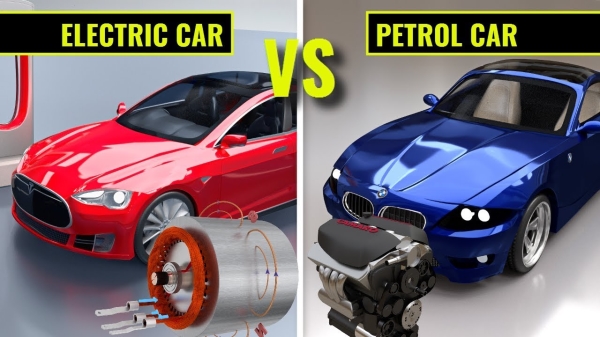Six-Year Auto Loans Carry Higher Costs and Higher Default Rates than Five-Year Auto Loans
Washington, D.C. –(ENEWSPF)—November 2, 2017
By: Consumer Financial Protection Bureau Communications

The Consumer Financial Protection Bureau (CFPB) today released a report on auto loan trends that found a sharp increase in riskier longer-term auto loans. According to the report, 42 percent of auto loans made in the last year carried a payback term of six years or more, compared to just 26 percent in 2009. The growth of these longer-term loans has largely come at the expense of five-year loans, which declined over the same period. The CFPB found that six-year auto loans are riskier—they cost more, are used by consumers with lower credit scores to finance larger amounts, and have higher rates of default.
“The move to longer-term auto loans is opening up more risk for consumers,” said CFPB Director Richard Cordray. “These loans are more expensive and can result in consumers continuing to owe even after they are no longer driving their car. Consumers should know before they owe and shop for the best deal based on costs incurred over the life of the loan.”
Auto loans are the third largest category of household debt for American consumers, behind mortgages and student loans, with almost 100 million auto loans outstanding totaling more than $1 trillion. For consumers who do not purchase a home, an auto loan may be the largest debt they will ever have to pay back. More than 90 percent of American households have a vehicle. And consumers obtain financing to purchase 86 percent of new vehicles and 53 percent of used vehicles.
Today’s report is derived from the Bureau’s Consumer Credit Trends dashboard with data from one of the three major credit reporting bureaus. The Bureau’s research found that six-year auto loans are on the rise. Roughly 42 percent of new auto loans carry a six-year term or longer, whereas these loans were just 26 percent of the market in 2009. These longer-term loans are riskier than five-year auto loans. The risks include:
Longer-term auto loans cost more: Six-year auto loans are usually more expensive than five-year loans because the longer it takes to repay a loan, the more it will usually cost in the long run. For example, a borrower who uses a five-year loan to finance $20,000 at a 5 percent interest rate will, after three years, have paid $2,190.27 in interest and have a remaining balance of $8,602.98. If the same loan had been financed over six years at the same interest rate, he or she would have paid about $152 more interest over the same three-year period and have a remaining balance of $10,747, which is more than $2,000 higher.
Longer-term auto loans are used by consumers with lower credit scores: The use of longer-term auto loans is closely related to the credit score of the borrower. The credit scores of borrowers taking out loans with terms of six years or longer are notably lower than the scores of borrowers who take out five-year loans. The average credit score for borrowers who take out six-year loans is 674, which is 39 points below the average for borrowers who take out five-year loans.
Longer-term auto loans finance larger amounts: The average loan amount for a six-year loan was $25,300, compared to $20,100 for a five-year loan. The average size of loans with terms of seven years or more was even larger at $32,200. These increased amounts may be the result of consumers buying more expensive cars, making smaller down payments, or otherwise financing larger loan amounts by including additional warranties or products in their auto loan.
Longer-term auto loans have higher rates of default: In recent years, loans six years or longer have had default rates that exceeded 8 percent, whereas shorter-term loans have had default rates closer to 4 percent. This means that six-year loans are about twice as likely as five-year loans to result in a default. The greater adoption of these loans may potentially pose greater risks to both consumers and lenders.
In the United States, the average length of ownership of a vehicle is approximately 6.5 years. This means that many consumers might still owe on loans after they are no longer driving the vehicle. Last year, the Bureau released an “auto loan shopping sheet,” a step-by-step guide, and additional online resources as part of the Bureau’s Know Before You Owe initiative aimed at helping consumers shop for an auto loan. The shopping sheet helps consumers see the total cost of a loan and make apples-to-apples comparisons among loan products. The Know Before You Owe auto loan resources also walk consumers through each step of the auto finance process to help them decide how much they can afford to borrow and what options are right for them.
The Consumer Credit Trends report is available at: http://files.consumerfinance.gov/f/documents/cfpb_consumer-credit-trends_longer-term-auto-loans_2017Q2.pdf
###
The Consumer Financial Protection Bureau is a 21st century agency that helps consumer finance markets work by making rules more effective, by consistently and fairly enforcing those rules, and by empowering consumers to take more control over their economic lives. For more information, visit consumerfinance.gov.
Source: www.consumerfinance.gov








